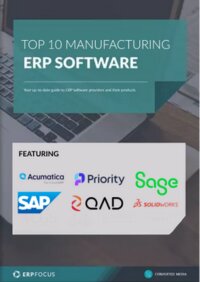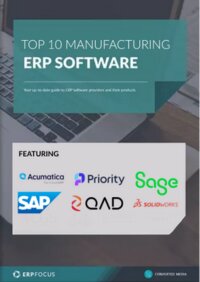Process Manufacturing ERP Implementation: Best Practices
Are you ready to begin your process manufacturing ERP implementation? It won’t be easy; it never is. But, here are some tips to help you and your business.
Lot Traceability
Make sure you maintain traceability during your process manufacturing ERP implementation. Your customers want to know you can trace the sources of their products at least to your suppliers and sometimes even to the originating source. Many food manufacturers need to trace all the way to the field the crop was grown in. You also need to trace the other way, from the source to any customers who might have bought products containing a common source. It is no use if half of your lot traceability data is in the legacy system and the other half is in the new system.
ERP implementation defines a potential break in the chain. Many will choose to use connections outside of the ERP such as another database or even a spreadsheet. This is the quick and easy solution but remember you must maintain and use that link for many years. Copying history from the old ERP requires a lot more data conversion at the implementation step but will allow you to use only your new ERP for lot traceability.
Data Conversion
You have a lot of data to convert that another business, outside of the process manufacturing industry, might not consider. Your MES must continue to provide step-by-step guides to producing all of your products. Your quality test processes must continue unbroken before and after ERP implementation. The chain of tests for a batch might bridge the go live date. Records of people qualified to make the necessary measurements and the calibration of test equipment need to be transferred to the new ERP. These aren’t particularly difficult data to convert; but there are a lot of data elements to be converted and many that can cause your business to be out of compliance with customer or government record keeping.
Pre-weigh data processes are another category unique to process manufacturing ERP implementation. You need to measure and label containers quickly and precisely. Those ingredients then need to be added to the process at very specific batch process points in time. Some of the ingredients might be hazardous and you will need to keep your documentation of the handling steps and environmental conditions during and after pre-weight.
Much of the data to be converted during process manufacturing ERP implementation is no different from any other business. Process manufacturing has unique qualities, but it also has many similarities with other businesses. Plan on converting your data several times. You probably will miss something the first time. Your ERP testing will likely find some data that didn’t convert into a usable format. You will improve with each iteration. Track the time needed for each conversion. Your efficiency will improve and by the actual go-live date, you will be able to plan the events precisely to be ready to open for business with your new process manufacturing ERP.
Free white paper

Top 10 Manufacturing ERP Software Comparison
Compare the best manufacturing ERP systems

Featured white papers
-

ERP Implementation: 9 steps to success
The 9 proven steps you should follow when implementing ERP
Download -

ERP Implementation Checklist
Over 120 actionable steps to implementing a new ERP successfully
Download -

Manufacturing ERP Implementation Checklist
Over 70 actionable steps to rolling out new manufacturing ERP software
Download
Related articles
-

The case for multi-tier ERP implementations
Learn more about multi-tier ERP implementation and why you might need one
-

Secret KPI: Why Your ERP Implementation Team Matters More Than Software
Learn how Godlan ensures successful ERP implementation for manufacturers with proven strategies &...
-

An example ERP implementation team structure for your project
Learn about three key elements of an ERP implementation team and the individuals who contribute w...

